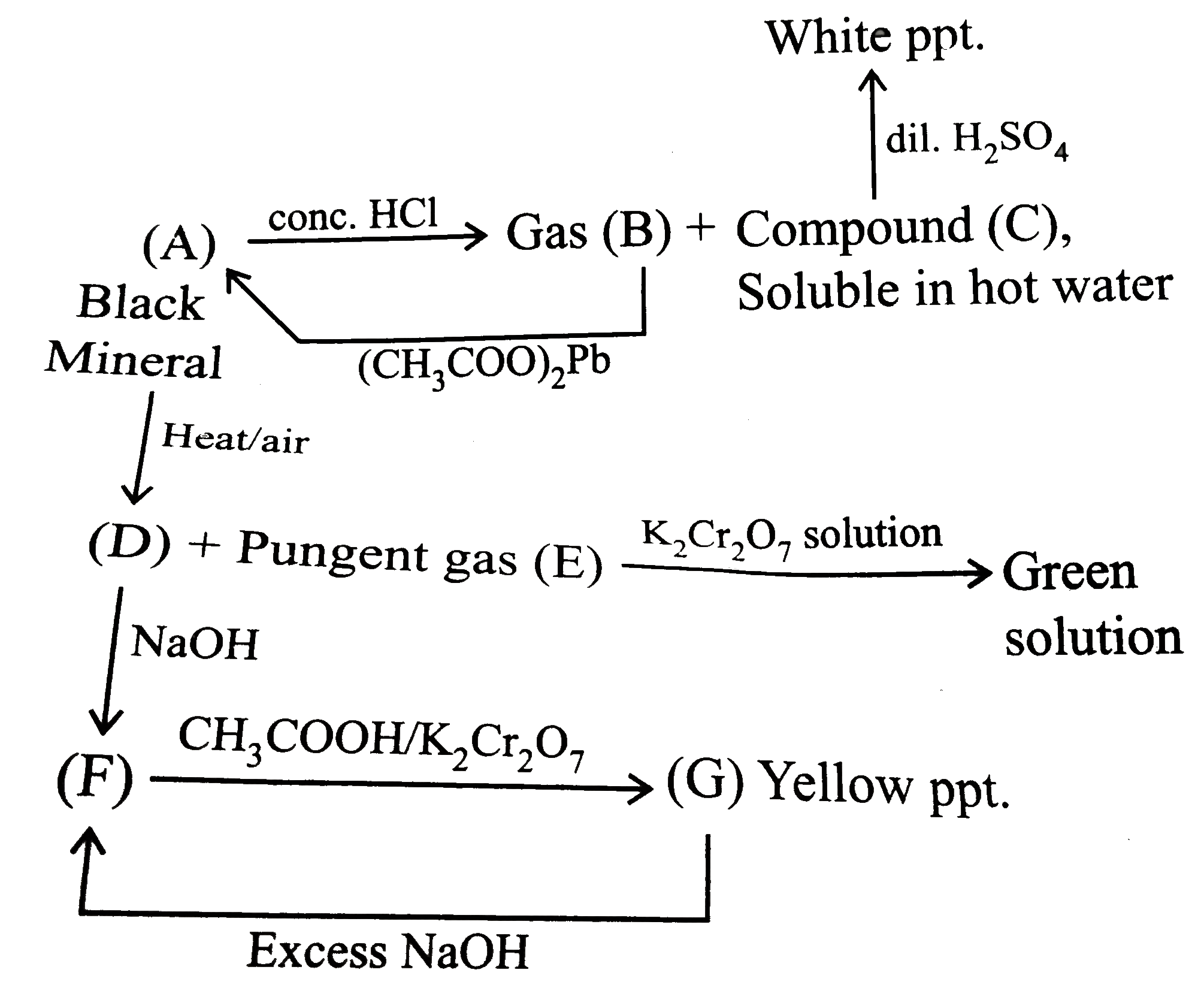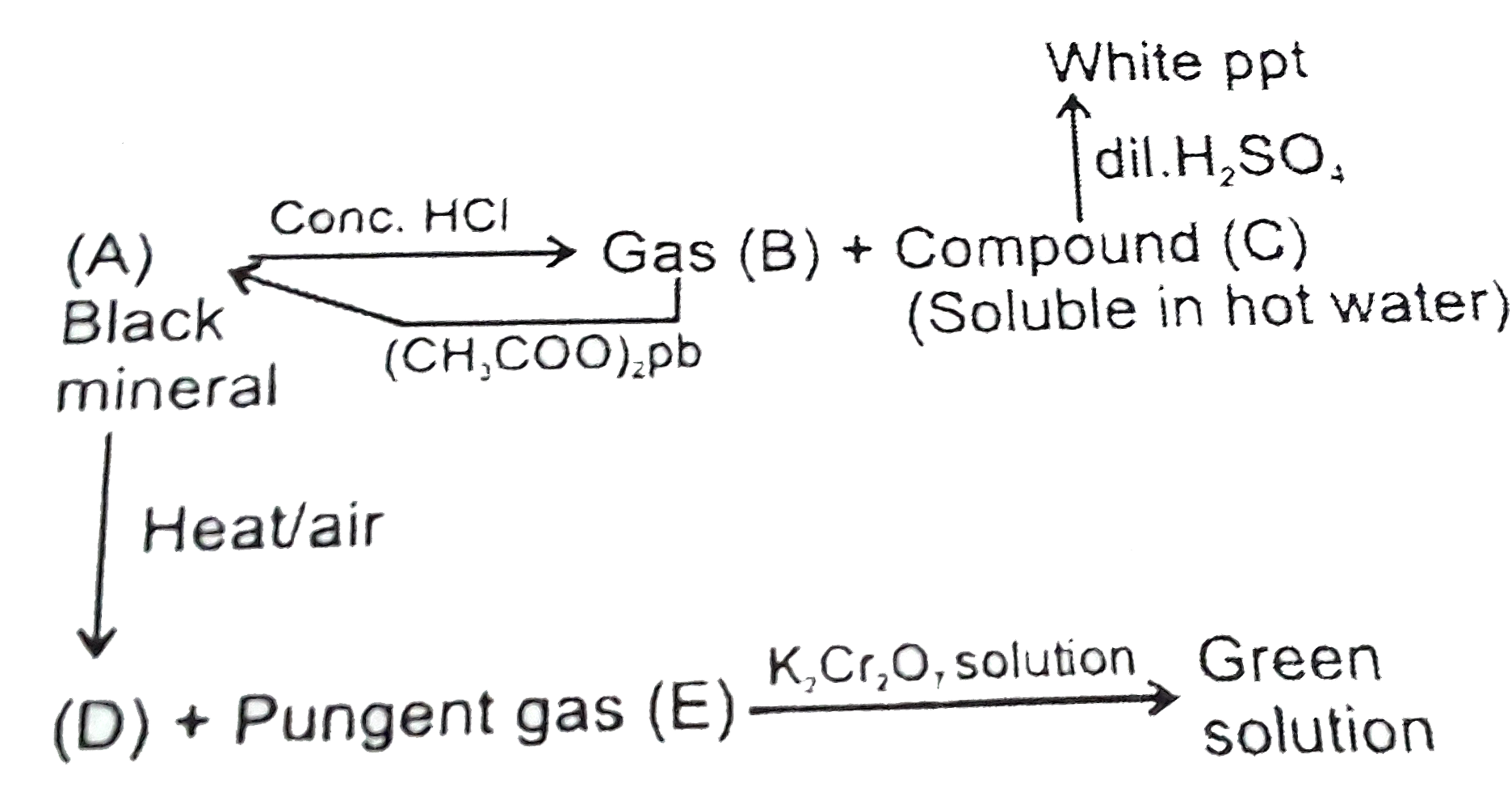An inorganic iodide (A) on heating with a solution of KOH gives a gas (B) and a solution of a compound. The gas (B) on ignition in air gives a compound (C ) and water. Copper sulphate is finally reduced to the metal on passing (B) through its solution.
Select the correct statement from the following for the gas (B).
Its solution in water does not decompose in presence of light.
It can be prepared by the alkaline hydrolysis of white phosphorus.
It is non- inflammable owing to the presence of P2H4.
It can act as oxidising agent.
The correct Answer is:C
To solve the problem, we need to analyze the reactions and identify the gas (B) produced, as well as the properties of this gas based on the given statements. Let's break down the solution step by step.
Step 1: Identify the Inorganic Iodide (A)
We start with an inorganic iodide (A) that reacts with KOH. A suitable candidate for this iodide is phosphonium iodide (PH4I).
Step 2: Reaction of A with KOH
When phosphonium iodide (PH4I) is heated with KOH, the following reaction occurs:
PH4I+KOH→PH3+KI+H2O
From this reaction, we can see that the gas (B) produced is phosphine (PH3).
Step 3: Reaction of Gas (B) on Ignition
Next, we need to examine what happens when phosphine (B) is ignited in air. The reaction is:
4PH3+4O2→2P2O5+6H2O
This shows that the compound (C) formed is diphosphorus pentoxide (P2O5).
Step 4: Reduction of Copper Sulfate
The problem states that when phosphine (B) is passed through a solution of copper sulfate (CuSO4), it reduces copper sulfate to copper metal. The reaction can be summarized as:
3CuSO4+2PH3→Cu3P2+3H2SO4
This confirms that phosphine acts as a reducing agent.
Step 5: Analyze the Statements
Now we will evaluate the statements provided in the question regarding gas (B):
1. Statement 1: "Its solution in water does not decompose in the presence of light."
- Analysis: This statement is false. Phosphine decomposes in the presence of light to form red phosphorus and hydrogen gas.
2. Statement 2: "It can be prepared by the alkaline hydrolysis of white phosphorus."
- Analysis: This statement is true. Phosphine can indeed be prepared from white phosphorus (P4) in the presence of an alkaline solution.
3. Statement 3: "It is non-inflammable owing to the presence of P2H4."
- Analysis: This statement is false. Pure phosphine is non-inflammable, but if it contains impurities like P2H4, it can become highly inflammable.
4. Statement 4: "It can act as an oxidizing agent."
- Analysis: This statement is false. Phosphine acts as a reducing agent, as it can be oxidized to phosphine oxides.
Conclusion
Based on the analysis, the only correct statement regarding gas (B) (phosphine) is Statement 2.
Final Answer
The correct statement for the gas (B) is: It can be prepared by the alkaline hydrolysis of white phosphorus.
We start with an inorganic iodide (A) that reacts with KOH. A suitable candidate for this iodide is phosphonium iodide (PH4I).
When phosphonium iodide (PH4I) is heated with KOH, the following reaction occurs:
PH4I+KOH→PH3+KI+H2O
From this reaction, we can see that the gas (B) produced is phosphine (PH3).
Next, we need to examine what happens when phosphine (B) is ignited in air. The reaction is:
4PH3+4O2→2P2O5+6H2O
This shows that the compound (C) formed is diphosphorus pentoxide (P2O5).
The problem states that when phosphine (B) is passed through a solution of copper sulfate (CuSO4), it reduces copper sulfate to copper metal. The reaction can be summarized as:
3CuSO4+2PH3→Cu3P2+3H2SO4
This confirms that phosphine acts as a reducing agent.
Now we will evaluate the statements provided in the question regarding gas (B):
- Analysis: This statement is false. Phosphine decomposes in the presence of light to form red phosphorus and hydrogen gas.
- Analysis: This statement is true. Phosphine can indeed be prepared from white phosphorus (P4) in the presence of an alkaline solution.
- Analysis: This statement is false. Pure phosphine is non-inflammable, but if it contains impurities like P2H4, it can become highly inflammable.
- Analysis: This statement is false. Phosphine acts as a reducing agent, as it can be oxidized to phosphine oxides.
Based on the analysis, the only correct statement regarding gas (B) (phosphine) is Statement 2.
The correct statement for the gas (B) is: It can be prepared by the alkaline hydrolysis of white phosphorus.
Topper's Solved these Questions
- P BLOCK ELEMENTSBOOK - RESONANCE ENGLISHCHAPTER - P BLOCK ELEMENTSEXERCISE - ALP EX #3 OBJECTIVE
1 Videos
- P BLOCK ELEMENTSBOOK - RESONANCE ENGLISHCHAPTER - P BLOCK ELEMENTSEXERCISE - ALP PART 1 OBJECTIVE
100 Videos
- P BLOCK ELEMENTSBOOK - RESONANCE ENGLISHCHAPTER - P BLOCK ELEMENTSEXERCISE - PART -III : Match the column
2 Videos
- NUCLEAR CHEMISTRYBOOK - RESONANCE ENGLISHCHAPTER - NUCLEAR CHEMISTRYEXERCISE - STAGE-II
1 Videos
- P-BLOCK ELEMENT (BORON AND CARBON FAMILY)BOOK - RESONANCE ENGLISHCHAPTER - P-BLOCK ELEMENT (BORON AND CARBON FAMILY)EXERCISE - PART - III : OLYMPIAD PROBLEMS (PREVIOUS YEARS) STAGE - V (INTERNATIONAL CHEMISTRY OLYMPIAD (IChO)) Problem 3
8 Videos
Similar Questions
An inorganic iodide (A) on heating with a solution of KOH gives a gas (B) and a solution of a compound. The gas (B) on ignition in air gives a compound (C ) and water. Copper sulphate is finally reduced to the metal on passing (B) through its solution.
The compound (C ) :
View SolutionAn inorganic iodide (A) on heating with a solution of KOH gives a gas (B) and a solution of a compound. The gas (B) on ignition in air gives a compound (C ) and water. Copper sulphate is finally reduced to the metal on passing (B) through its solution.
What is true about gas (B) and compound (C ) ?
View SolutionIdentify (A) to (E).
(a) An inorganic iodide (A) on heating with a solution of KOH gives a gas (B) and the solution of a compound (C).
(b) The gas (B) on ignition air gives a compound (D) and water.
( C) Copper sulphate is reduced to the metal on passing (B) through the solution.
(d) A precipitate of the compound (E) is formed on reaction of (C) with copper sulphate solution.
View SolutionIdentify (A) to (C).
(a) An inorganic iodide (A) on heating with a solution of KOH gives a gas (B) and the solution of a compound (C).
View Solution
Gas (B) on passing through CaSO4 solution will give
View SolutionA black mineral (A) on heating in presence of air gives a gas (B). (A) and (B) are respectively:
View Solution
Gas (B) on passing through cadmium acetate solution will give :
View SolutionWhat do you observe when
HS gas is passed through copper sulphate solution.
View SolutionAn inorganic compounds gives off O2 on heating. It also makes the colourless solution of potassium iodide to acquire purple tinge. The compound can be
View SolutionA black mineral (A) on heating in presence of air gives a gas (B). The mineral (A) on reaction with dilute H2SO4 gives a gas (C) and a solution of a compound (D) on passing the gas (C) into an aqueous solution of (B), a white turbidity is obtained. The aqueous solution of (D) on reaction with potassium ferricyanide gives a blue compound (E). Identify (A) to (E) and give chemical equations for the reaction involved.
View Solution
